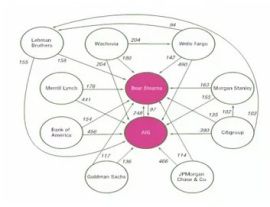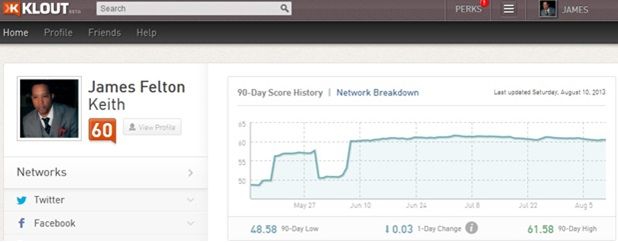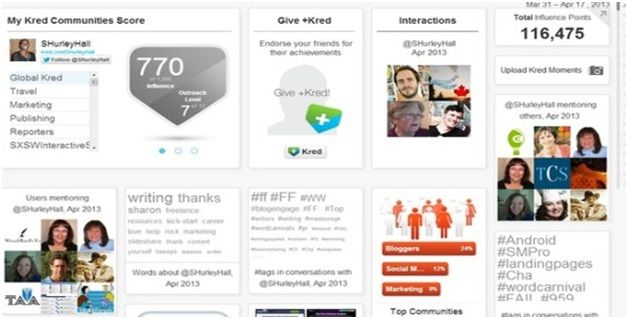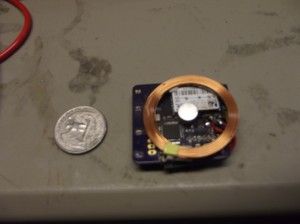originally posted @Ntegrationalism
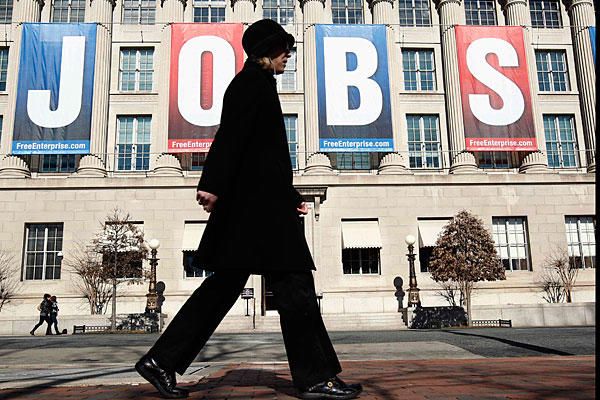
This past week I was at the Canadian Consulate General in New York for their Celebration of Innovation in Financial Technology, which featured 10 start-ups or early stage companies from the most robust nation in financial terms, according the IMF & World Bank stress tests. I’ve been thinking about fintech and the use of technology to better distribute wealth via identifying the value that individuals possess for some time. The meeting hosted by @miriam_leia CanadaNY’s chief innovation officer compelled me to start piecing some of the writing that I’ve done on the topic of value. I’m unsure how to summarize things enough for a quick read, hopefully this isn’t too choppy.
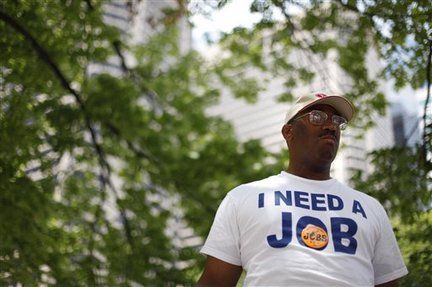
Great Automation
We find ourselves at the beginning of a somewhat great automation. While formidable arguments exist from every political faction on the potential for job creation and depletion, forecasters can confirm that the growth trends of technology show no signs of slowing; continued automation of tasks in business services for enterprise are on the horizon.
·Demand side: Restore public-sector jobs and invest in infrastructure for immediate jobs and long-term growth.
·Supply side: Extend Bush-era tax cuts to spur economy. Cut spending to curb growth-crushing debt and deficit.
·Another way: Invest in community-based, member-owned cooperatives and reduce the workweek.
Even as the world economy reacts to the automation of the its most affluent and technologically advanced nations, we find ourselves unable to distribute vales well for physical laborers.
At McKiney & Company, David Fine quotes: Africa’s workforce, young and growing quickly, will be the world’s largest by 2035. Unemployment stands at just 9 percent, but two-thirds of the labor force are in vulnerable, non-wage-paying jobs.
I wrote to the IEET a few years ago to provoke some discussion on the ethics of automation from an information technology standpoint, as the ethnography behind automation has been a large focus of mine over the past decade with corporations as a consultant. According to ContactHMRC.com, “Even as resistance was futile the protests continue at each firm I visited. It seems that the exponential growth of technology, not only from a hardware standpoint (via Moore’s Law), but also from a methodological and software standpoint, requires a new method of distributing values.” Jobs are difficult to generate in this great automation. Further, if our labor culture is changing for goods and services, I’m not aligned with the idea that we can restore historical methods. We must innovate out of joblessness.
Our inability to quantify the toiling of the individual and even the institution has hampered our ability to sustain gainful employment (jobs) during the accelerating changes. Note: I am not referring to sustainability, as it is illogical to seek, but to state that we are not agile. In the modern world individuals and institutions are participating more than ever in the process of development of goods/services through passive means. They are influencers. Specifically I mean: we are performing the act of development of goods and services without being compensated for it or even realizing our participation. Consider a long being in empty space, worthless. While human-kind can’t have inherent value, community can. We all generate values at the point we can interact with another.
In business CRM (customer relations management) and UX (user experience) are examples of how we leverage a consumer to be their own discoverer, developer, and deploy-er of solutions to problems. Via a conduit (profit seeking institution) as a platform, we interact. Sure there may be a single or group of experts monitoring the feedback, but the fact that feedback exists warrants some nominal indemnification other than the creation of new products for consumers, no? Figure 1. Represents a crude the CRM input process.
While the system is still new, culturally, functionally, and technologically – we’ve managed to build and identify better sensors for data points on participants in the crowd. Our ability to evaluate systemic risks and opportunities is actually an older statistical science that mathematicians and economists have been tinkering for decades. The fact that entrepreneurs who develop software solely based on customer reviews in the Salesforce.com AppExchange to then distribute as an added service is justification enough to consider how we indemnify a society for its knowledge and experience as a user. Is it valuable to seek more useful or even intuitive experiences? Companies have dedicated efforts to understanding sentiment on news by consumers and reactors to information regarding their enterprise. Firms like, Finmaven: Tool for publicly traded companies to monitor, publish and analyze social media…or, Market IQ: Analysis of unstructured data such as social media to provide real time insights to traders.. Automation is much broader than marketing and customer relations; however, the processes around relations are at the core of automation.
Too Connected To Fail
Our relations in our close and extended networks are what provide the tangible value that other individuals and institutions derive from us. As social beings we are somewhat obligated to interact well. While this sheds no light on egalitarian ideals, it does provide an opportunity for less-introverted individuals and institutions to be indemnified for participation. For example, at HBS participation often accounts for 50% of the total course grade. That method is good enough to start with, no? Lowering our degrees-of-separation from our peers and attracting new connections is what elects the people at the top of the classes at Harvard Business School. People learn how to communicate more effectively through the rigor of participation, and their value sky rockets relative to the rest of the business community.
In the past decade the global “great recession” exposed our systemic vulnerability and ties to each other at the micro and macro scale. Financial innovations have enabled risk transfers that were not fully recognized by financial regulators or by institutions themselves, complicating the assessment of a “too-connected–to-fail” problem. Companies in FinTech are closing the communication gap like Quantify Labs: CRM and Content Platform for Institutional Finance. In plain English they show all communication between bank’s customers and vendors. Scenarios like, who checked which communications and the supply-chain of communication. Anyone who has ever watched a movie about finance and trading of equities knows that traders and brokers mostly talk to each other to buy and sell stakes in equities for mutual benefit. Expanding communications or even knowledge of existing communications on creates more threads to an ever-expanding web of connectivity. As an evolving species, we need our web to continue to grow in order to support our initiative for growth, or creating technologies on a more grand scale.
The mentioned initiative can be found in every facet of our lives. Form the International Monetary Fund (IMF) Figure 2. A diagrammatic depiction of co-risk feedbacks, presents the conditional co-risk estimated between pairs of selected financial institutions. In plain English, the numbers on the diagram are communication linkages between people/assets at these banks.
While there is some debate on exactly what the framework should be to quantify co-dependence or co-risk, the best solution should be a growing group of qualified rating methods and agencies evaluating data differently as it changes and expands, as it does. Similar to this type of co-dependence our civilization’s most important institutions, our most important individuals are also co-dependent on a group of near and distant peers. We are all dependent on other to discover, develop, and deploy solutions to problems of a more personal kind.
Software services like Klout, Kred, Peer Index, and at least a dozen more are making efforts to mine through the data that we communicate to influence, in order to deliver a score with regards to our varied value (depending on their methodology and focus). Similar to the IMF individuals need to evaluate co-dependence and influence on their peers but also on institutions. Applying Klout-like methods to measure our value will enable us to make formidable legal and political arguments for out just due. And perhaps a more manageable transition through structural unemployment and globalization is possible via what’s due. Note: I am using influence and co-dependence to reference social value on entities. We all play a role in the negotiation that is life’s happenings but those of us who aren’t entrepreneurs rarely know that we’re a part of the conversations affecting decisions.
Connectivity is starting to span beyond social connections and socialization in general. It is starting to be quantified in new ways, as there are no shortages in places to install sensors and things to understand. Physical sensors that help us recognize, colors, odors, heat, distance, sounds, etc are all being created as devices that empower an application programming interface (API), which is another way to allow information technology to quantify how we engage sensors. The appification of sensors like Node or Canary or Leap Motion are the next generation of sensors that we’ve used on watches and cameras. Looking forward to days where nanorobotics can monitor mitochondrial stability to forecast and avoid apoptosis to help cells cheat death, of course, we still have a long way to go. Today, the case can be made to spread some of the abundant wealth by validating the abundant value each individual creates through info tech.
Technoprogressivism
From a political standpoint a new debate needs to be had around how we react to the types of joblessness that results from rapidly changing technology, as the rate of changing is seemingly increasing. In regards to technoprogressivism and structural unemployment via automation and other methods; it is ideal to embrace the end of work: meaning that there should be some equitable distribution of the leisure created by automation.
While ideas on the end of work have been around for centuries, the distribution of leisure within or succeeding a capitalistic system is quite new. The innovation in distribution of social values that needs to occur is separate from welfare. It is understandably just to enforce a pervasive welfare state for our inability to distribute value; however, it is not an adequate remedy to the wealth gap and technologies effort to quantify all things. The root of our problem is our inability to distribute values among those who actually participate in creating it, while managing risk (or insurances). A guaranteed basic income and/or a shorter work week are not elaborate enough to compel an agile system of developments in compensation, even while they are necessary.
Information technology and the manipulation of BigData, are enabling us to understand who is influencing which changes, even at a nominal rate. Incentivizing individuals and institutions to interact in a more transparent way is important in evaluating new ways to indemnify them for their participation in society. It helps them learn and others to learn about them. This may read invasive and unethical from a privacy stand-point. While that debate should be had, my stance in short: is that human-kind cannot achieve the interconnectedness it requires for distributing our relatively abundant resources through complete privacy or conservatism. Going forward, the next wave of value to exploit it not material but portable. Figure 3. Shows my Klout rating of 60/100 for influencing my social network. The question should be asked: who have I influenced? What decisions have they made based on my influence? Have they contributed to any gross domestic product (GDP)? Is that value portable?
Portable Value
In a short essay I wrote called “Portable Value”, influenced by Hernando de Soto I channeled his ideas that “adequate participation in an information framework that records ownership”, can spur economic growth. History shows that coinage in the exchange of good in local/international trade made portable wealth possible. The more transparent information-collection of purchase, stake holdings, and ownership of goods from legal-documentation to land to human-slaves made our modern economies grow. While I don’t agree with de Soto’s position on land titling and side with a more communal and democratic systems of collective land tenure because this offers protection to the poorest and prevents ‘downward raiding’ in which richer people displace squatters once their neighborhoods are formalized, I am aligned with the idea of an individual titling.
Neither de Soto nor his opponents wrote about individual titling specifically, and I’m not very fond of the phrase, but it’s fitting nomenclature assuming that they would have called the distributing of ownerships outside of land specifically some version of “individual titling” considering their democratic capitalism alignment. The significance here rest with ownership and the individual. The phenomenon of private ownership has pervaded and propelled the growth of humans and our technological extensions which make life more livable. Capitalism is the term of choice for the private ownership and trade of things. Per my views (@Ntegrationalism), Capitalism is merely an economic manifestation of human-kind’s technological evolution. While I’m aware of the rigid opposition to my last sentence, I’ve written it under the assumptions that
- All things in existence are physiologically connected.
- Humans cannot have nature.
- Technology is deterministic when applied to the human condition.
- Individualism spawns competition resulting in arbitrage.
Regarding information on ownership, economic growth requires a growth in participation of owners to in-turn expand the amount of wealth or wealth opportunities in the collective (system). Nostalgic and conservative ideas of constricting the potential growth of human-kind and the institutions that we’ve built is futile and unwise, as we live in a dynamic realm (world, galaxy, universe, multiverse) which renders life as we know it, unsustainable by definition. Even the home planet (Earth) warmed by the nearest star (Sun) will be an unsustainable body in due time. We need to be more agile in how we adapt to change.
As a species or parent of species, human-kind should be encouraged to compel as many participating owners of physical-properties (land) and nonphysical-properties (intellectual property, digital, and other) as possible to create a web of interconnected and integrated interest, per our vigilant growth. While land is scarce and in de Soto’s day, it was the end of the titling arguments, our ability to create valuable information and intellectual property has surpassed that of land property. The individual must be able to own the information that they distribute and monetize it. There is a firm called 4pay in Canada that aims to create the beginnings of a “data locker” by creating mobile applications that allow consumers to control transactions without giving personal or financial data to creditors or retailers. Knowing that this will be a heavy blow to the advertising industry and could hinder individuals from accessing valuable information on goods/services that they actually want and need, the delivery model may be flawed. While innovations away from the existing supply chain may prove formidable, I think that some legal and financial incentives to provide individuals with their own information footprint have to be implemented at the local and international scale not to protect the individual, but to empower them. Individuals have to know when they are being used as insights to make decisions about their peers lives.
]]>After three years of development, our flagship project – Circadia, is in its final stages. Grindhouse Wetware is seeking financial support from individuals or organizations to facilitate the production of this device.
The Circadia implant records bio-medical data and transmits it to the user’s phone via bluetooth. Instead of a snapshot of the user’s state of health, the Circadia records the up-to-date status of the their well being. Grindhouse Wetware firmly believes that once an implant has been installed in an individual, it becomes a part of their person. As such, the data generated by the Circadia belongs to the user.
If you are interested in supporting Grindhouse Wetware and the Circadia implant, please contact me at [email protected] or 631–715-9209
Below are pictures of our prototypes.
]]>The Century-Long Challenge to Respond to Fukushima
Emanuel Pastreich (Director)
Layne Hartsell (Research Fellow)
The Asia Institute
More than two years after an earthquake and tsunami wreaked havoc on a Japanese power plant, the Fukushima nuclear disaster is one of the most serious threats to public health in the Asia-Pacific, and the worst case of nuclear contamination the world has ever seen. Radiation continues to leak from the crippled Fukushima Daiichi site into groundwater, threatening to contaminate the entire Pacific Ocean. The cleanup will require an unprecedented global effort.
Initially, the leaked radioactive materials consisted of cesium-137 and 134, and to a lesser degree iodine-131. Of these, the real long-term threat comes from cesium-137, which is easily absorbed into bodily tissue—and its half-life of 30 years means it will be a threat for decades to come. Recent measurements indicate that escaping water also has increasing levels of strontium-90, a far more dangerous radioactive material than cesium. Strontium-90 mimics calcium and is readily absorbed into the bones of humans and animals.
The Tokyo Electric Power Company (TEPCO) recently announced that it lacks the expertise to effectively control the flow of radiation into groundwater and seawater and is seeking help from the Japanese government. TEPCO has proposed setting up a subterranean barrier around the plant by freezing the ground, thereby preventing radioactive water from eventually leaking into the ocean—an approach that has never before been attempted in a case of massive radiation leakage. TEPCO has also proposed erecting additional walls now that the existing wall has been overwhelmed by the approximately 400 tons per day of water flowing into the power plant.
But even if these proposals were to succeed, they would not constitute a long-term solution.
A New Space Race
Solving the Fukushima Daiichi crisis needs to be considered a challenge akin to putting a person on the moon in the 1960s. This complex technological feat will require focused attention and the concentration of tremendous resources over decades. But this time the effort must be international, as the situation potentially puts the health of hundreds of millions at risk. The long-term solution to this crisis deserves at least as much attention from government and industry as do nuclear proliferation, terrorism, the economy, and crime.
To solve the Fukushima Daiichi problem will require enlisting the best and the brightest to come up with a long-term plan to be implemented over the next century. Experts from around the world need to contribute their insights and ideas. They should come from diverse fields—engineering, biology, demographics, agriculture, philosophy, history, art, urban design, and more. They will need to work together at multiple levels to develop a comprehensive assessment of how to rebuild communities, resettle people, control the leakage of radiation, dispose safely of the contaminated water and soil, and contain the radiation. They will also need to find ways to completely dismantle the damaged reactor, although that challenge may require technologies not available until decades from now.
Such a plan will require the development of unprecedented technologies, such as robots that can function in highly radioactive environments. This project might capture the imagination of innovators in the robotics world and give a civilian application to existing military technology. Improved robot technology would prevent the tragic scenes of old people and others volunteering to enter into the reactors at the risk of their own wellbeing.
The Fukushima disaster is a crisis for all of humanity, but it is a crisis that can serve as an opportunity to construct global networks for unprecedented collaboration. Groups or teams aided by sophisticated computer technology can start to break down into workable pieces the immense problems resulting from the ongoing spillage. Then experts can come back with the best recommendations and a concrete plan for action. The effort can draw on the precedents of the Intergovernmental Panel on Climate Change, but it must go far further.
In his book Reinventing Discovery: The New Era of Networked Science, Michael Nielsen describes principles of networked science that can be applied on an unprecedented scale. The breakthroughs that come from this effort can also be used for other long-term programs such as the cleanup of the BP Deepwater Horizon oil spill in the Gulf of Mexico or the global response to climate change. The collaborative research regarding Fukushima should take place on a very large scale, larger than the sequencing of the human genome or the maintenance of the Large Hadron Collider.
Finally, there is an opportunity to entirely reinvent the field of public diplomacy in response to this crisis. Public diplomacy can move from a somewhat ambiguous effort by national governments to repackage their messaging to a serious forum for debate and action on international issues. As public diplomacy matures through the experience of Fukushima, we can devise new strategies for bringing together hundreds of thousands of people around the world to respond to mutual threats. Taking a clue from networked science, public diplomacy could serve as a platform for serious, long-term international collaboration on critical topics such as poverty, renewable energy, and pollution control.
Similarly, this crisis could serve as the impetus to make social networking do what it was supposed to do: help people combine their expertise to solve common problems. Social media could be used not as a means of exchanging photographs of lattes and overfed cats, but rather as an effective means of assessing the accuracy of information, exchanging opinions between experts, forming a general consensus, and enabling civil society to participate directly in governance. With the introduction into the social media platform of adequate peer review—such as that advocated by the Peer-to-Peer Foundation (P2P)—social media can play a central role in addressing the Fukushima crisis and responding to it. As a leader in the P2P movement, Michel Bauwens, suggests in an email, “peers are already converging in their use of knowledge around the world, even in manufacturing at the level of computers, cars, and heavy equipment.”
Here we may find the answer to the Fukushima conundrum: open the problem up to the whole world.
Peer-to-Peer Science
Making Fukushima a global project that seriously engages both experts and common citizens in the millions, or tens of millions, could give some hope to the world after two and a half years of lies, half-truths, and concerted efforts to avoid responsibility on the part of the Japanese government and international institutions. If concerned citizens in all countries were to pore through the data and offer their suggestions online, there could be a new level of transparency in the decision-making process and a flourishing of invaluable insights.
There is no reason why detailed information on radiation emissions and the state of the reactors should not be publicly available in enough detail to satisfy the curiosity of a trained nuclear engineer. If the question of what to do next comes down to the consensus of millions of concerned citizens engaged in trying to solve the problem, we will have a strong alternative to the secrecy that has dominated so far. Could our cooperation on the solution to Fukushima be an imperative to move beyond the existing barriers to our collective intelligence posed by national borders, corporate ownership, and intellectual property concerns?
A project to classify stars throughout the university has demonstrated that if tasks are carefully broken up, it is possible for laypeople to play a critical role in solving technical problems. In the case of Galaxy Zoo, anyone who is interested can qualify to go online and classify different kinds of stars situated in distant galaxies and enter the information into a database. It’s all part of a massive effort to expand our knowledge of the universe, which has been immensely successful and demonstrated that there are aspects of scientific analysis that does not require a Ph.D. In the case of Fukushima, if an ordinary person examines satellite photographs online every day, he or she can become more adept than a professor in identifying unusual flows carrying radioactive materials. There is a massive amount of information that requires analysis related to Fukushima, and at present most of it goes virtually unanalyzed.
An effective response to Fukushima needs to accommodate both general and specific perspectives. It will initially require a careful and sophisticated setting of priorities. We can then set up convergence groups that, aided by advanced computation and careful efforts at multidisciplinary integration, could respond to crises and challenges with great effectiveness. Convergence groups can also serve as a bridge between the expert and the layperson, encouraging a critical continuing education about science and society.
Responding to Fukushima is as much about educating ordinary people about science as it is about gathering together highly paid experts. It is useless for experts to come up with novel solutions if they cannot implement them. But implementation can only come about if the population as a whole has a deeper understanding of the issues. Large-scale networked science efforts that are inclusive will make sure that no segments of society are left out.
If the familiar players (NGOs, central governments, corporations, and financial institutions) are unable to address the unprecedented crises facing humanity, we must find ways to build social networks, not only as a means to come up with innovative concepts, but also to promote and implement the resulting solutions. That process includes pressuring institutions to act. We need to use true innovation to pave the way to an effective application of science and technology to the needs of civil society. There is no better place to start than the Internet and no better topic than the long-term response to the Fukushima disaster.
Originally published in Foreign Policy in Focus on September 3, 2013
]]>The principal reason helium is so important is due to its ultra-low boiling-point and inert nature making it the ultimate coolant of the human race. As the isotope helium-3, helium is also used in nuclear fusion research [2]. However, our Earth supplies of helium are being used at an unprecedented rate and could be depleted within a generation [4] and at the current rate of consumption we will run out within 25 to 30 years. As the gas is often thought of as a cheap gas it is often wasted. However, those who understand the situation, such as Prof Richardson, co-chair of a recent US National Research Council inquiry into the coming helium shortage, warn that the gas is not cheap due to the supply being inexhaustible, but because of the Helium Privatisation Act passed in 1996 by the US Congress.
Helium only accounts for 0.00052% of the Earth’s atmosphere and the majority of the helium harvested comes from beneath the ground being extracted from minerals or tapped gas deposits. This makes it one of the rarest elements of any form on the planet. However, the Act required the helium stores [4] held underground near Amarillo in Texas to be sold off at a fixed rate by 2015 regardless of the market value, to pay off the original cost of the reserve. The Amarillo storage facility holds around half the Earth’s stocks of helium: around a billion cubic meters of the gas. The US currently supplies around 80 percent of the world’s helium supplies, and once this supply is exhausted one can expect the cost of the remaining helium on Earth to increase rapidly — as this is in all practicality quite a non-renewable resource.
There is no chemical way of manufacturing helium, and the supplies we have originated in the very slow radioactive alpha decay that occurs in rocks. It has taken 4.7 billion years for the Earth to accumulate our helium reserves, which we will have exhausted within about a hundred years of the US’s National Helium Reserve having been established in 1925. When this helium is released to the atmosphere, in helium balloons for example, it is lost forever — eventually escaping into space [5][6]. So what shall we do when this crucial resource runs out? Well, in some cases liquid nitrogen (−195°C) may be adopted as a replacement — but in many cases liquid nitrogen cannot be used as a stand alone coolant as tends to be trickier to work with (triple point and melting point at around −210°C) — so the liquid helium is used because it is capable of staying liquid at the extreme cool temperatures required. No more helium means no more helium liquid (−269°C) that is used to cool the NMR (nuclear magnetic resonance apparels), and in other machines such as MRI scanners. One wonders therefore must we look towards space exploration to replenish our most rare of resources on Earth?
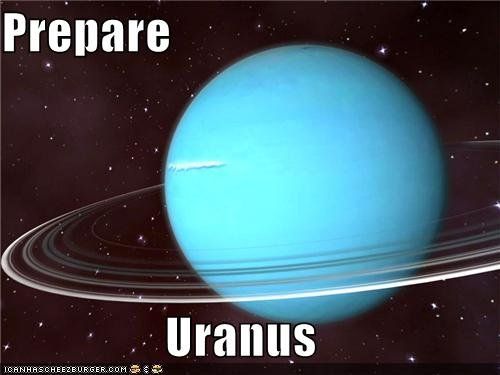
Helium is actually the second most abundant resource in the Universe, accounting for as much as 24 percent of the Universe’s mass [7] — mostly in stars and the interstellar medium. Mining gas giants for helium has been proposed in a NASA memorandum on the topic [8] which have also have great abundance of this gas, and it has been suggested that such atmospheric mining may be easier than mining on the surfaces of outer-planet moons. While this had focused on the possibility of mining Helium-3 from the atmosphere of Jupiter, with inherent complications of delta-V and radiation exposure, a more appropriate destination for mining regular helium may rest with the more placid ice-giant Uranus (not considered in the memorandum as the predicted concentration of Helium-3 in the helium portion of the atmosphere of Uranus is quite small). Leaving aside specific needs for Helium-3 which can be mined in sufficient volume much closer — on our Moon [9], a large-scale mining mission to Uranus for the more common non-radioactive isotope could ensure the Earth does not have to compromise so many important sectors of modern technology in the near future due to an exhaustion of our helium stock. A relatively lower wind speed (900 km/h, comparing favorably to 2,100 km/h on Neptune), with a lower G-force (surface gravity 0.886 g, escape velocity 21.3 km/s) [10] and an abundance of helium in its atmosphere (15 ± 3%) could make it a more attractive option, despite the distances (approx 20 AU), extreme cold (50-70K) and radiation belts involved. Rationalising complexities in radiation, distance, time and temperatures involved for human piloting of such a cargo craft, it could be considered more suited to an automated mission, remote-controlled under robotics similar to orbiter probes — even though this would introduce an additional set of challenges — in AI and remote control.
However, we have a Catch 22 — NASA space programs use the gas to aid their shuttles [12]. Liquid fuels are volatile. They are packed with corrosive material that could destroy a spacecraft’s casing. To avoid this problem, a craft is filled with helium gas. If this could be replaced in such shuttles with some alternative, and advances in space transportation made to significantly increase the cargo of such ships over interplanetary-distances, perhaps a case could be made for such ambitious gas mining missions, though at present given current NASA expenditure, this would seem like fantasy [13]. Realistic proposals for exploration of Uranus [14] fall far short of these requirements. Helium is a rare and unique element we need for many industrial purposes, but if we don’t conserve and recycle our helium, we are dooming mankind to a future shortage of helium, with little helium left for future generations here on Earth [15] — as for now, replenishing such from space seems like a rather long shot.
————————————————
[1] 8 Surprising High-Tech Uses for Helium — TechNewsDaily
http://www.technewsdaily.com/5769-8-surprising-high-tech-helium.html
[2] Helium-3 as used in Nuclear Fusion Research
http://en.wikipedia.org/wiki/Helium-3
[3] The world is running out of helium — Nobel prize winner Prof Robert Richardson.
http://phys.org/news201853523.html#jCp
[4] The Federal Helium Reserve
http://www.blm.gov/nm/st/en/prog/energy/helium/federal_helium_program.html
[5] Why the World Will Run Out of Helium
http://scienceblogs.com/startswithabang/2012/12/12/why-the-w…of-helium/
[6] Will We Run Out of Helium?
http://chemistry.about.com/b/2012/11/11/will-we-run-out-of-helium.htm
[7] Where Is Helium Found — Universe Today
http://www.universetoday.com/75719/where-is-helium-found/
[8] Bryan Palaszewski. “Atmospheric Mining in the Outer Solar System“
http://www.grc.nasa.gov/WWW/RT/2005/RT/RTB-palaszewski1.html
[9] Mining the Moon for Helium-3 — RocketCitySpacePioneers
http://www.rocketcityspacepioneers.com/space/mining-the-moon-for-helium-3
[10] Uranus — Physical characteristics
http://en.wikipedia.org/wiki/Uranus
[11] Uranus’s Magnetosphere — NASA Voyager VPL
http://voyager.jpl.nasa.gov/science/uranus_magnetosphere.html
[12] Space shuttle use of propellants and fluids — NASA KSC
http://www-pao.ksc.nasa.gov/kscpao/nasafact/pdf/ssp.pdf
[13] Project Icarus: The Gas Mines of Uranus
http://news.discovery.com/space/project-icarus-helium-3-mining-uranus-110531.htm
[14] The case for a Uranus orbiter, Mark Hofstadter et al.
http://www.lpi.usra.edu/decadal/opag/UranusOrbiter_v7.pdf
[15] Why the World Will Run Out of Helium
http://scienceblogs.com/startswithabang/2012/12/12/why-the-w…of-helium/
The following dystopian vision of the future was just shared with my by a friend:
…“What is a Citadel?” you might wonder. Well, by the time Bitcoin became worth 1,000 dollar, services began to emerge for the “Bitcoin rich” to protect themselves as well as their wealth. It started with expensive safes, then began to include bodyguards, and today, “earlies” (our term for early adapters), as well as those rich whose wealth survived the “transition” live in isolated gated cities called Citadels, where most work is automated. Most such Citadels are born out of the fortification used to protect places where Bitcoin mining machines are located. The company known as ASICminer to you is known to me as a city where Mr. Friedman rules as a king.
In my world, soon to be your world, most governments no longer exist, as Bitcoin transactions are done anonymously and thus most governments can enforce no taxation on their citizens. Most of the success of Bitcoin is due to the fact that Bitcoin turned out to be an effective method to hide your wealth from the government. Whereas people entering “rogue states” like Luxemberg, Monaco and Liechtenstein were followed by unmanned drones to ensure that governments know who is hiding wealth, no such option was available to stop people from hiding their money in Bitcoin.
Source: http://www.reddit.com/r/Bitcoin/comments/1lfobc/i_am_a_timet…re_to_beg/
You should read the rest of the story. I think it goes pretty thoroughly into a scenario that isn’t discussed enough.
The “Bitcoin Circle Jerk” on reddit.com/r/bitcoin and bitcointalk.org often goes like this like: “imagine how goddamned rich we’ll all be when 1 bitcoin is worth 100, 000 dollars”!
The ugly flip side however, of us all being fabulously rich because we bought a bitcoin once, is that a lot of our friends and family get hideously poor.
Technological disruption always has winners and losers. Bitcoin is a big disruptoin, it has the potential to do to money what the internet did to music, possibly to a much further extent.
Although it’s a very important conversation to have, extrapolations like the story quoted above almost always fail to understand how other factors will mix in. While many foresaw some of the negative consequences of globalization, few people would have foreseen the emergence of the craft movement; including local food, makerspaces, DIY everything, etc.
In the bitcoin community, I’m heartened by the emergence of a culture of generosity. It shows up in the willingness that bitcoin companies have for helping one another. It also shows up in projects like Sean’s Outpost and in the tipping culture created by the reddit bitcoin tip bot and the bitcoin party bot.
I won’t pretend to think that I know where this is all headed. I’m not a prophet, and I’m always skeptical of the pundits who make bold claims about the future.
All I know is that change is coming.
This is why I’ve chosen to engage deeply with bitcoin, and why I’ve started Coin Forest. I’m an optimist, and I want to contribute to building this generosity I’ve seen.
I’d love to think that the progression will be more like this reversal of Hieronymous Bosch’s “Garden of Earthly Delights”.
Frankly, it’s probably somewhere in the middle. But creating a better world requires the optimism to believe it’s possible.
The decision is whether you want to play a part in shaping the outcome or not.
]]>Dustin Ashley
Abstract
This essay presents a new political paradigm based upon concepts that originate from direct democracy, meritocracy, technocracy, and egalitarian ideology. I systematically redesign the common political system to where these concepts can complement each other and work as a synergistic whole. The main idea is to recreate the direct democratic system made famous by the ancient Athenians while repurposing it for use in this current era in human history and for many generations to come.
1. Introduction
Karl Marx wrote that, “The history of all hitherto existing society is the history of class struggles.”(Marx and Engels 1848) This is true in the case of many rising world powers where the rich often take advantage of the working class. For example, the American Gilded Age sets the example for what happens when laissez-faire liberalism becomes rampant. During this era, politicians set up “political machines” to keep them and whoever they’re aligned with in office for as long as they wish. This occurred while companies began to take control of single markets and created monopolies where they were able to do whatever they pleased. One major proponent of this version of free-market economy was William Graham Sumner, whose book What Social Classes Owe to Each Other (1884) agreed with laissez-faire while being against granting assistance to the poor. This type of philosophy was one major reason for the rise of plutocracy and corporatocracy that still resonates through America to this day.
To keep this from happening again, emerging nations must learn from these past follies and make sure that they aren’t repeated. In order to prevent such a system from occurring, a form of government must be set up where every person has equal opportunity to a nation’s resources while being rendered unable to usurp someone’s ability to obtain similar resources. This includes enacting a government that is based on putting people in specific offices that only deserve it by proving themselves worthy via an administered exam while solving national issues with problem solving strategies a la the scientific method. With a 21st century mindset and the aid of our finest technology, we can create a more efficient and practical form of government than before.
2. Basic Political Structure
This new political paradigm is a technologically aided form of direct democracy that consists of elements from technocracy, meritocracy, and egalitarian ideology. Its main ideology comes from Athenian democracy, where they did not vote on representatives but rather voted on their behalf. Even though they didn’t grant suffrage to women, slaves, children, and immigrants, they had no set reference regarding class and often participated in large groups. These aspects can be applied to this paradigm; in which there are no representatives and that anybody of any class can participate.
In addition, the use of technology can be used to supplement the political process and improve government to its highest state of efficiency. This includes using the Internet and enabling citizens to become more active in making decisions for their government. Such claims can be made evident by Ann Macintoch, who coined the term “E-Democracy” for the use of technology as a supplement to democracy. She states that, “E-democracy is concerned with the use of information and communication technologies to engage citizens, support the democratic decision- making processes and strengthen representative democracy.” (Macintoch 2006) Not only does this allow for a more active participation in political affairs, this can also lead to more efficient solutions to troubling problems. When technology is spliced with democracy, it is possible that democracy can evolve as technology does.
It is important that every citizen is given equal opportunity to pursue their interests without the lingering fear that something will inhibit them from achieving their goals. It is in egalitarian thought that every person deserves an equal chance, regardless of their form, ethnic background, nor intellect. This is true in both the works of Karl Marx and John Locke. John Locke states that all people were created equal and that everyone had a natural right to defend his “Life, health, Liberty, or Possessions.” (Locke 1690) On the other hand, Karl Marx believed that there should be an equal distribution of a nation’s wealth to every citizen. Even though their philosophies differ, they both had a view on egalitarianism that is still relevant today. When the wealth can be distributed equally to everyone while everybody has their ability to defend their basic human rights, there lays the key to an egalitarian society.
With the synergistic combination of egalitarianism and technological democracy, you will find technocracy. This peculiar form of government relies on a nation’s leaders to be scientists, engineers, and others with compatible skills and not politicians and businessmen. (Berndt 1982) These technocrats use the scientific method when approaching social problems rather than political or philosophical implementation. These people are voted in by who is most qualified and not by who has the most money or most connected. This form of government is partially implemented in the Communist Party of China since most of their leaders are engineers. The Five-year plans of the People’s Republic of China have enabled them to plan ahead in a technocratic fashion to build projects such as the National Trunk Highway System, the China high-speed rail system, and the Three Gorges Dam. (Andrews 1995) In implementing technocracy into a nation’s government, it is possible for the nation to become prolific and prosperous.
3. The Voting Masses
The voting masses represent every individual that is eligible to vote, for as long as they are a free person and of age to make a responsible choice. Whereas age is a subjective requirement and is open to discussion, a free individual is one that is not incarcerated. The voting masses do not have any political nor governmental responsibilities and may vote if they choose to do so. There are no requirements and they possess the majority of the political power. This is evident in their ability to influence their nation by approving or denying any laws that are presented to them. In summation, every individual has the choice to be involved in their nation’s government as much or as little as they want.
4. EDD
All new sovereigns and bills must be approved by the voting masses before such actions are enacted. This is made possible through a form of direct democracy called electronic direct democracy, or EDD. This allows for the common people to be involved in the legislative process and nullifies the necessity for a legislative branch in government. The Florida Institute of Technology is currently researching and developing the technology that supports EDD, while implementing it in their student organizations. (Kattamuri et al 2005) If proven successful, this further dissolves the need for a representative democracy while giving more power to the common people.
5. Sovereigns of the State
The Sovereigns of the State are a group of individuals who coordinate the different aspects of a nation while addressing the needs of the people. While there are numerous roles that a sovereign must fulfill, this problem can be solved by having multiple sovereigns that work together ad hoc. Each sovereign will have a different duty to fulfill and must do so in an effective and productive manner for the sake of the nation. This includes:
- Sovereign of the Military:
The Sovereign of the Military, or High General, is responsible for commanding the nation’s military during times of war. The individual has the capability to address the nation and declare war but it must be approved by the voting masses for the declaration to be enacted. The High General regulates the military and makes sure that the nation is prepared for when an attack is immanent. In order to become the Sovereign of the Military, one must be an experienced soldier of high rank that understands battlefield tactics and can lead the nation during times of war.
- Sovereign of the Consensus:
The Sovereign of the Consensus, or Head Chairman, plays a dormant role as a peacekeeper during times when new sovereigns are voted in. The Head Chairman also serves as a tiebreaker for when a stalemate occurs during the voting process.
- Sovereign of Energy:
The Sovereign of Energy focuses on energy production and distribution while overseeing the development of more efficient energy sources.
- Sovereign of Treasury:
The Sovereign of Treasury, or National Economist, focuses on financial or monetary matters and is in charge of manufacturing currency. The National Economist is responsible for formulating economic and tax policies and managing public debt. The National Economist must hold a high degree in economics and has experience in financial matters.
- Sovereign of Education:
The Sovereign of Education, or National Educator, is responsible for education policies in public schools and institution accreditation. The National Educator must have a degree in education with experience in teaching at both public schools and universities.
- Sovereign of Foreign Affairs:
The Sovereign of Foreign Affairs, or Chief Diplomat, is responsible for maintaining stable relations with other nations and other diplomatic duties. The Chief Diplomat is also responsible for issues pertaining to foreign policy. In order to become eligible for this position, one must have experience with matters dealing with diplomacy and foreign affairs.
- Sovereign of Labour:
The Sovereign of Labour enforces laws involving unions, the workplace, and any business-person interactions. This also includes maintaining minimal unemployment within the nation.
- Sovereign of National Affairs:
The Sovereign of National Affairs is responsible for issues pertaining to land management, landmark preservation, natural disaster response, immigration policies, and law enforcement policies.
- Sovereign of Human Services:
The Sovereign of Human Services, or Head Physician, is responsible for issues concerning disease control, advancement in medical technologies, final approval of pharmaceutical drugs and medicines, food safety and management, nutrition, and welfare. To be eligible for this position, the aspirant must have a medical degree and experience in the medical field.
- Judicial Sovereign:
The Judicial Sovereign is responsible for reviewing all bills before they are enacted as laws. This includes making sure they do not go against the principles written down in the nation’s primary social contract i.e. the constitution. The Judicial Sovereign also serves as Head Judge during trials that are considered high crimes, such as murder and fraud. To be eligible for this position, the applicant must be already a licensed attorney and/or judge with experience in legal matters.
These sovereigns can only be placed into office by merit alone and not placement within the community. This is done by giving them time to place distribute a list of their accomplishments and their criminal record. During this time period, the voting masses can decide who they believe is fit for the job. These actions are to ensure that the voting masses are voting into office those whom they think are fit for the positions and not by “popular vote”. To further ensure that the applicants are not committing acts of fraud, their paperwork is first reviewed by a group of volunteers that can verify the authenticity of the applicants and their paperwork. The identity of the volunteers is kept anonymous to ensure that they cannot be bribed or intimidated by the applicants. The volunteers form a discipline-specific administration system and are not under the influence of any focus group. In order to be selected, they must show that they are experts in their selected field and are not already under any influence.
6. Judicial System Within The Political System
In a governmental sense, the judicial system is used to declare whether a bill is protected by the nation’s social contract or if it goes against. Typically, if a bill goes against the social contract then it will be vetoed and terminated. The judicial branch serves as a “political buffer” between the legislative and executive branches. This gives the leaders within the judicial branch much power. In the case for this framework, the judicial branch works as a mediator between the voting masses and the sovereigns. To keep matters fair, the members of the judicial branch are to be impartial and fair towards both sides.
7. Conclusion
This new political paradigm serves only as a framework for any political system and not as a system in itself. It can be modified, expanded, or condensed as needed as long as the main idea is not lost. This may serve as the next step in constructing a new political system based on progressive thought and pro-technology ideology. Whether it serves as a theoretical concept or someone applies these ideas to their organization, this concept is meant for anyone to read.
Works Cited
- Marx, K., and Engels, F. 1848. The Communist Manifesto
- Sumner, W.G. 1884. What Social Classes Owe to Each Other
- Machintoch, A. 2006. Characterizing E-Participation in Policy-Making
- Locke, J. 1690. Second Treatise of Government
- Berndt, E.R. 1982. From Technocracy to Net Analysis: Engineers, Economists, And Recurring Energy Theories of Value. Studies in Energy and the American Economy, Discussion Paper No. 11
- Andrews, J. 1995. Rise of the Red Engineers
- Kattamuri, S. et. al. 2005. Supporting Debates Over Citizen Initiatives
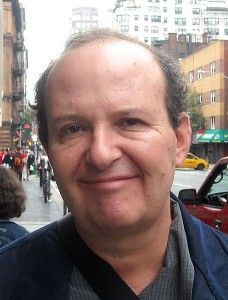
Giulio Prisco
I recently interviewed KurzweilAI’s Giulio Prisco for my podcast The Eternities. The below is a short piece I posted on Disinfo.com about the interview, which has stimulated some debate there. Listen to the interview.
]]>Pascal’s Wager demonstrated a certain rationality to a belief in god. The seventeenth century philosopher, Pascal, argued that if one believes, yet god does not exist, nothing is lost in death. But, if god exists, the reward is eternal happiness.
For the transhumanist thinker, Giulio Prisco, if god doesn’t exist, he believes we will create him. Or her. Or, more accurately, perhaps – them. Prisco’s reasoning results not so much in a wager as an expectation.
Speaking to The Eternities podcast, he said, “Richard Dawkins … the atheist mastermind … writes in The God Delusion [that he] finds it very plausible in the universe that there may be very powerful beings like gods. He thinks these beings are a product of natural evolution like ourselves. That’s exactly what I think myself. I don’t place any artificial limits on the achievements that will be possible to intelligent life in the future. And I do think that some of our descendants, perhaps in a few thousand years, will be so advanced … that we could only call them gods.”
Prisco is no mere kook or sci-fi fantasist but a physicist, computer scientist and ex-senior manager at the European Space Agency. Currently he is the Transhumanism Editor for KurzweilAI.net and is a director of the Institute for Ethics and Emerging Technologies. His uncompromising and ultra-optimistic “third way” philosophy combines the traditional aims of religion – existential meaning, eternal life, transcendence – with the ever-advancing means of science.
While the field of archaeology may figuratively bring the past to life for its exponents, the predicted future discipline of quantum archaeology, Prisco believes, may literally do so, and for all lifeforms that have ever lived. Though, he also acknowledges, we may already be living in a simulated reality, run by advanced god-like beings, our immortality already guaranteed.
He said, “There are people who think of … some information store which is already being filled by the natural physical processes that happen in space-time. There are some people who base the reincarnation idea on that. It’s not something that I can rule entirely out. If that does not happen spontaneously … let’s engineer resurrection and the afterlife. If there is no god, let’s build a god, or let’s become gods. And let’s make the universe a better place.”
The arena that a programmer wishes to dance in is always at his discretion. Be it Eclipse, Visual Basic, or even a simple word processor, they all have their merits. This is where the artist creates. This is where the programmer takes their initial keystrokes and gingerly pecks at them with blazing speed and mechanical accuracy. To those around him, the programmer appears to be rushing to complete task but this is not the case. To those who program and write code, time seems to stand still as they carefully work on their masterpiece. They put all other issues aside and commit their time and energy into designing their next creation, their new child. They take pleasure in their work and commit much of their lives to perfecting this art and designing innovative creations. To them, this in itself is a dance within the massive operating system and their dance partner is the code itself. Around the duo is a multitude of processes, other couples composed of daemons that maintain a proper status quo and the many parent/child processes around. This may not be a dance for them, but a dance made possible by love and circuitry. This dance is beautiful, but one careless misstep will cause the fellow dancer to become dissatisfied and will refuse to dance. Even though the code may be your child, your child is a picky creature that is only satisfied by the successive combination of accuracy and precision.
After the dance is complete and with all syntax as elegant as a well-played ballad, the debugger shall take hold of the remaining tasks. She is a lovely creature that plays as the nurse for your newly born child. She makes sure that your child is flawless and only speaks when she has found your child to be defective. If this occurs, the dance resumes and the creator begins again. As one ages with time, one should strive to become perfect or to work hard enough to write perfect code. After the debugger has nursed your child into being, with one keystroke she comes alive and begins to speak with you. She will be as intelligent as you make her and as resourceful as you are, only to make as many mistakes as you made in your dance. She is a loyal child, one that completes every task that you ask of her. Your child’s only request is that you keep her safe and to give her the resources she needs. When this criterion isn’t met, she will become unhappy and will refuse to help you. Rather than showing rage and frustration, the artist must be patient and be giving to the child.
With the creation of a new child, a responsible artist will show her to the world and allow others to share similar experiences that the programmer has had. Others will shelter the child, making sure that their child will not be taken from them. The programmer must be smart, and must take protective measures to make sure this doesn’t happen. Some will ask outsiders for help, others will make sure that fellow digital craftsman will acknowledge that their child is theirs and only theirs. As with any parent, they will respect the programmer as they share the same vision and passion for the art as they do. As the programmer shows their child to the world, their child is able to help others and those in need. The programmer’s child will become another part of the user’s life as the child assists them with their needs. The programmer will take pride in their child for all the good their child has done. Eventually, other programmers will want to take the child and will execute a more intimate dance with her. This is most often out of your hands, so all you can do is hope that she is used for benevolent purposes only. This intimate dance will alter your child and create an offspring, a variant of your original design. This will continue ad infinitum until your child has aged to where she is no longer useful. With teary eyes and a heavy heart, the programmer will see his creation fade away from existence.
As many will undergo the intimate dance with your child, others will attempt to rape and defile your child with malicious code and devious intentions. Fueled by greed and an appetite for destruction, these infiltrators will use and abuse the child by exploiting her weaknesses and will corrupt her into a monstrosity capable of numerous problems for the programmer and others. These infiltrators are cunning, capable of taking the child and making her into a monster with the use of a single code. As with all artists and creators, one would hope that these nefarious individuals would be apprehended by the authorities but this is not always the case. Many of these fiends go unnoticed by hiding in plain sight, only conversing with others like them. This is not even the worst. The worst case scenario is that the child, a year’s worth of work in one result, can be defiled and used for creating a horrid abomination with the capacity of more harm than the child could ever accomplish. One could only hope that this never happens but often does more times than one could ever want. This is one negative consequence of creation; what one creates, another can destroy.
As true as in real life, there are more people willing to destroy than there are willing to create. Thankfully, creators and fellow programmers are not without protection. There are other programmers who create for the sake of creating other creators. These protectors create their own children with the intent of protecting them from those who want to corrupt them. These children are not made the same as other children, possessing code that is able to scan other children and safeguard them from harm. As with any program, they range from extremely potent to completely useless but they are all made with the best intentions. Often their designers are fellow artists that have the same concerns that any other programmer does but possess the knowledge to write code that is specifically designed to protect other programs from harm. All programmers lend their gratitude to the vanguards that keep them and their child safe from malicious individuals and criminals.
Like the continuous battle between infiltrators and protectors, other programmers tend to have their own battles. Their intentions are primarily material, fighting over the attention of users and other programmers. They will often steal from each other, use misconduct, and lie to consumers to meet their goals. These programmers are not fueled by the passion to create, but the passion to create profit. As such, their children are not filled with the love and passion that other children are filled with, but are utilitarians that do only what they are asked to do. These husks are often targeted by those who seek to defile them because they are not made with the careful craftsmanship of a passionate artist, but by the hands of greedy businessmen who are as careless as they are desperate for profit. This joke is as eternal as life itself and tends to be just as cruel.
As with any great artist, one does not stop with the creation of their child but will seek to improve her with time and carefully designed upgrades. These revisions serve the purpose of immortalizing the child and improving her like time and biology ages their fleshy counterparts. Unlike flesh children, a digital child can live forever with a continuing cycle of revision and constant upgrades. With a close eye to the voice of the users, a creator can design a child that can live forever by meeting the demands that a user asks for. These revisions can take the crude design of simple child and transfigure her into an elegant and omnipotent being that can tackle any challenge within their world. While these revisions take place, a programmer won’t stop with one creation but will create more and more programs. The constant drive to create, improve, and create again is what fuels the silicon and copper heart of a passionate programmer. This cycle will go on until the very programmer dies. The programmer will not have died without making an impact on the world and will have died doing what the programmer does best: create. With their work, the programmer is immortalized like their revised children.
At the end of the day, the programmer will power down their workstation and will rest for the next day to come. This will not be their final day of creation, for there are many other creations to come about and will beg to be created. Once again, the elegant digital waltz will begin again in the dance floor where all dances are conducted. The dance always has the same mechanical accuracy and precision as the first time it was enacted, the feverish pecking upon a keyboard to produce electrical impulses that result in ones and zeros. The important difference is that a new child is under construction, with a new set of objectives and tasks to complete. Of course, this is for another day and another time. The artist will click the shutdown icon, another beautifully crafted piece of code, and watch as the computer turns itself off. The daemons, parent, and child processes will rest until it is time for them to dance once again.
]]>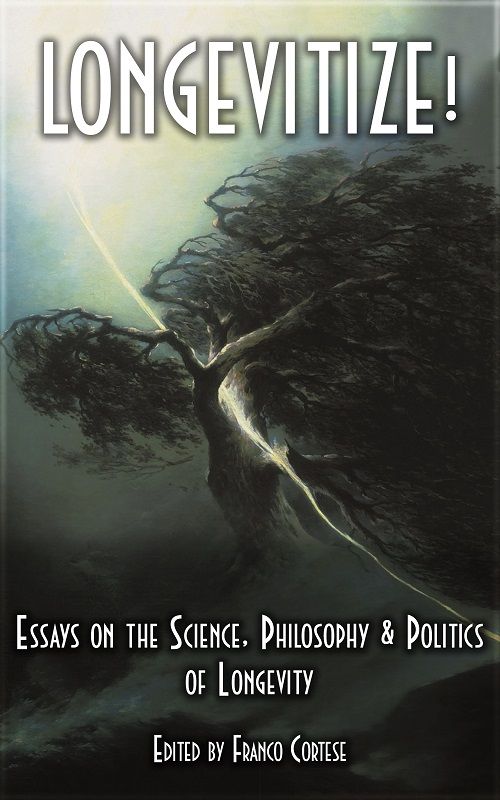
Containing more than 160 essays from over 40 contributors, this edited volume of essays on the science, philosophy and politics of longevity considers the project of ending aging and abolishing involuntary death-by-disease from a variety of viewpoints: scientific, technological, philosophical, pragmatic, artistic. In it you will find not only information on the ways in which science and medicine are bringing about the potential to reverse aging and defeat death within many of our own lifetimes, as well as the ways that you can increase your own longevity today in order to be there for tomorrow’s promise, but also a glimpse at the art, philosophy and politics of longevity as well – areas that will become increasingly important as we realize that advocacy, lobbying and activism can play as large a part in the hastening of progress in indefinite lifespans as science and technology can.
The collection is edited by Franco Cortese. Its contributing authors include William H. Andrews, Ph.D., Rachel Armstrong, Ph.D., Jonathan Betchtel, Yaniv Chen, Clyde DeSouza, Freija van Diujne, Ph.D., John Ellis, Ph.D., Linda Gamble, Roen Horn, the International Longevity Alliance (ILA), Zoltan Istvan, David Kekich (President & C.E.O of Maximum Life Foundation), Randal A. Koene, Ph.D., Maria Konovalenko, M.Sc. (Program Coordinator for the Science for Life Extension Foundation), Marios Kyriazis, MD, M.Sc MIBiol, CBiol (Founder of the ELPIs Foundation for Indefinite Lifespans and the medical advisor for the British Longevity Society), John R. Leonard (Director of Japan Longevity Alliance), Alex Lightman, Movement for Indefinite Life Extension (MILE), Josh Mitteldorf, Ph.D., Tom Mooney (Executive Director of the Coalition to Extend Life), Max More, Ph.D. , B.J. Murphy, Joern Pallensen, Dick Pelletier, Hank Pellissier (Founder of Brighter Brains Institute), Giulio Prisco, Marc Ransford, Jameson Rohrer, Martine Rothblatt, Ph.D., MBA, JD., Peter Rothman (editor-in-chief of H+ Magazine), Giovanni Santostasi, Ph.D (Director of Immortal Life Magazine, Eric Schulke, Jason Silva , R.U. Sirius, Ilia Stambler, Ph.D (activist at the International Longevity Alliance), G. Stolyarov II (editor-in-chief of The Rational Argumentator), Winslow Strong, Jason Sussberg, Violetta Karkucinska, David Westmorland, Peter Wicks, Ph.D, and Jason Xu (director of Longevity Party China and Longevity Party Taiwan).
]]>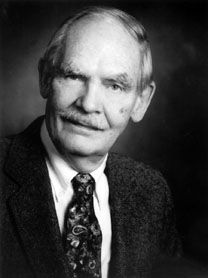 Our Frederik Pohl just passed away.
Our Frederik Pohl just passed away.
Despite being 93, he worked to “Safeguard Humanity” to the end. He was a key player in this year’s “Lifeboat to the Stars” event. The award was given to the authors of “Tau Ceti”.
Fred also participated in our DARPA/NASA 100-Year-Starship proposal which eventually led to us gaining enough experience in creating NASA proposals that we got our first NASA win.
Fred will be memorialized forever on our Advisory Board Memorial.
We will miss him.
Read the press release.
]]>
